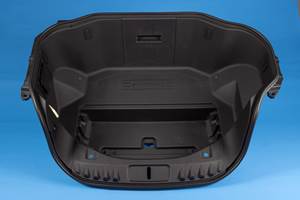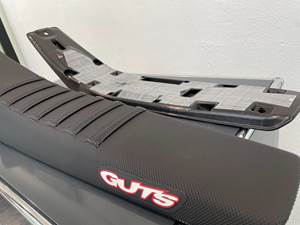R&D Spending in Automotive Could Spur Demand
OEMs are investing more in R&D as they explore new technologies, a trend that bodes well for processors serving this market.
At Gardner Intelligence, we work diligently to provide our readers with information that connects economic data with current and expected business conditions. To accomplish this goal, we collect both economic data and equities data from Wall Street firms. By monitoring and reporting data from both domains, we create a more comprehensive view of what is and will happen in the specific manufacturing spaces covered by Gardner Business Media, parent company of Plastics Technology Magazine.
In recent months we have called attention to declining car sales and flattening truck sales. Yet this broad-brush picture misses critical dynamics of the industry, such as how the introduction and mass placement of new technologies and new drive trains is creating significant demand for equipment in the automotive industry.
For this reason, Gardner Intelligence recently examined the financial statements of 14 major automotive OEMs to discern possible industry trends in capital expenditures, net property plant and equipment, and working capital. We selected these 14 OEMs because of the richness of the quarterly data they have provided during these years in their Security and Exchange filings, and then indexed this data to build a representative model of the industry.
What we found was that between the fourth quarter of 2012 and the third quarter of 2017, capital expenditures grew at a nominal annualized rate of 4.7%. Unadjusted for inflation, the industry—as represented by our data—is spending 25% more on capital expenses than it did at the end of 2012. Additionally, net property, plant, and equipment data, which includes a broader range of purchases, including equipment but also depreciation of old equipment, has growth even faster during this time, with annualized growth of 17%. The result is that net PP&E today is nearly 70% higher than it was in 2012 .
Working capital between 2012 and 2015 was relatively stable until 2016, when it fell more than 20% from its level at the end of 2012. At present, the 14 firms for which we have data are holding 73% of the working capital they did at the end of 2012. Although working capital has diminished during these years, we see that major OEMs are spending more on R&D as a percentage of revenue than they have in the past.
Honda and Daimler, respectively, spent over 5% and 3.7% of revenues on R&D in the third quarter of 2017. This is significantly more than was spent just two years prior, when Honda spent 4.25% and Daimler 3.25% of revenue on R&D in the third quarter of 2015.
While increasing sales in recent years has certainly bolstered some of these figures, it is important to realize that the new technologies coming to market in the next few years will require investments that will create sustained demand and industry growth for advanced automation, machinery, tooling, composites, and plastics. All OEMs understand that the significant changes their industries are and will be undergoing in the next few years will result in significant purchases of more technically capable and complex equipment.
ABOUT THE AUTHOR: Michael Guckes is the chief economist for Gardner Business Intelligence, a division of Gardner Business Media (Cincinnati, OH). He has performed economic analysis, modeling and forecasting work for nearly 20 years among a wide range of industries. Michael received his BA in political science and economics from Kenyon College and his MBA from The Ohio State University. mguckes@gardnerweb.com
Related Content
Automotive Awards Highlight ‘Firsts,’ Emerging Technologies
Annual SPE event recognizes sustainability as a major theme.
Read MoreInjection Molded Tape and Resin “Sandwich” Technology Debuts
During its Mobility Days in Austria, Engel and KTM Technologies debuted an all-plastic molded motorcycle seat base produced via a tape-sandwich process that can run in a standard molding process.
Read MorePEEK for Monolayer E-Motor Magnet Wire Insulation
Solvay’s KetaSpire KT-857 PEEK extrusion compound eliminates adhesion and sustainability constraints of conventional PEEK or enamel insulation processes.
Read MoreCarbon Fiber Reinforced Nylon 12 for Injection Molding
CRP Technology’s new composite is 100% recycled from Windform XT 2.0 IMG industrial 3D printing material.
Read MoreRead Next
For PLASTICS' CEO Seaholm, NPE to Shine Light on Sustainability Successes
With advocacy, communication and sustainability as three main pillars, Seaholm leads a trade association to NPE that ‘is more active today than we have ever been.’
Read MoreSee Recyclers Close the Loop on Trade Show Production Scrap at NPE2024
A collaboration between show organizer PLASTICS, recycler CPR and size reduction experts WEIMA and Conair recovered and recycled all production scrap at NPE2024.
Read MorePeople 4.0 – How to Get Buy-In from Your Staff for Industry 4.0 Systems
Implementing a production monitoring system as the foundation of a ‘smart factory’ is about integrating people with new technology as much as it is about integrating machines and computers. Here are tips from a company that has gone through the process.
Read More
.jpg;width=70;height=70;mode=crop)











